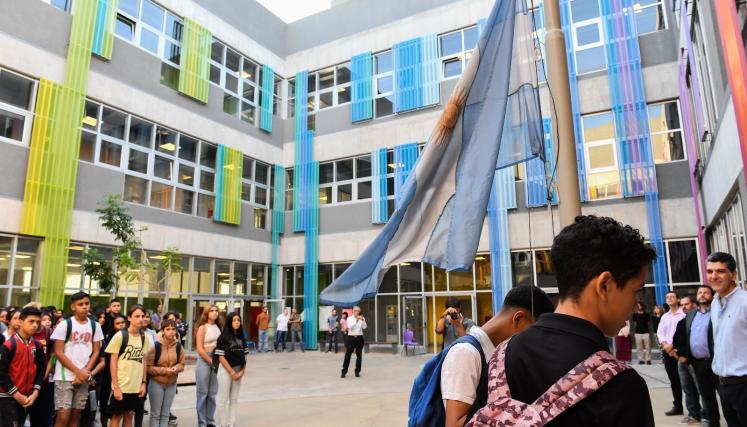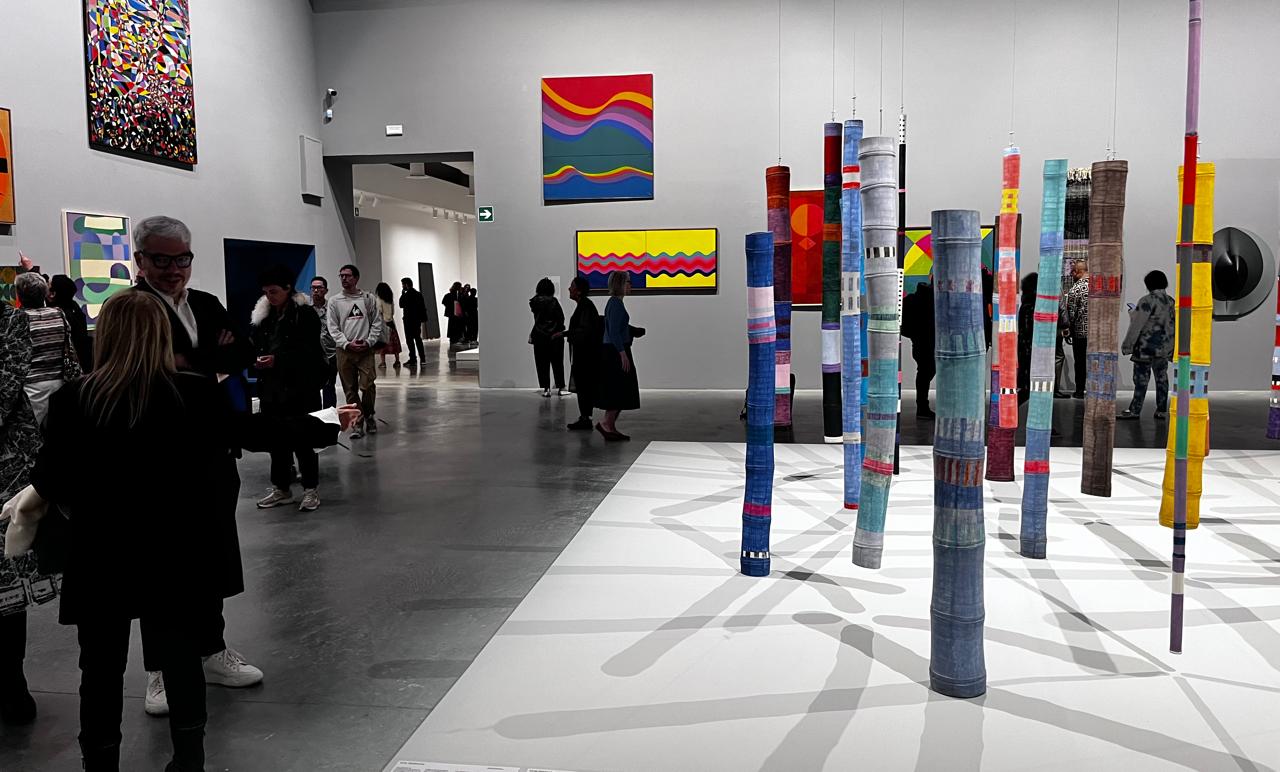The promotion of the use of the bike, the Public Bicycle Transport System and the Network of Protected bike lanes, which today has 267 km- were decisive in the growth of the use of the bike: in 2009 only 0.4% of the City's trips were made by bicycle, however, that percentage had already risen to 4% even before the pandemic. In the new bike lanes of Corrientes and Córdoba avenues, during the first weeks, there was an increase of 113% and 186% of cyclists respectively. In recent days, the World Economic Forum highlighted the City of Buenos Aires for its work in the context of the pandemic in relation to climate cultural change and the lane to a sustainable city. Another parameter that stands out and has been evolving for more than 10 years is the growth of women on bikes. In 2009, when this strategic policy began to be implemented, female cyclists represented 7.2%; in the annual counts carried out by the Ministry of Transport and Public Works, by 2019 female cyclists reached 21.3%.
“While in 2009 only 0.4% of the trips in Buenos Aires were made by bicycle; before the pandemic, that percentage had already risen to 4%. Today that growth has skyrocketed and hundreds of thousands of people choose to move in a sustainable way. The fact that more and more cyclists join the streets is not only positive from a health point of view, but it will also determine the foundations for the City that we want to give to the next generations." Juan José Mendez, Secretary of Transport and Public Works of the City of Buenos Aires.
 - Bike in the City
/ 114% increased the number of bike trips across the City over last year.
/ COMMBI (bicycle camera) registered between the months of May and July a year-on-year growth of bicycle sales of 50%
/ Mercado Libre registered a sales increase of 131%
/ 50% delivery orders increased in delivery applications during the pandemic.
- Bike lanes in Corrientes and Córdoba
/ 113% more cyclists since infrastructure was incorporated in Corrientes Av.
/ 186% more cyclists since infrastructure was incorporated in Córdoba Av.
/ From 11% to 28% more women cyclists use the avenues to ride their bikes.
- Women cyclists in Buenos Aires
/ 2009: 7.2% of female cyclists.
/ 2019: 21.3% of female cyclists.
Projection: 1 million bicycle trips by 2023
Projections on the evolution of bicycle use in the City had an expectation of moderate growth until March of this year. With the arrival of the pandemic, this process was intensified and it was necessary to accelerate many of the projects that were already planned and to think of new complementary solutions to accompany the record number of bicycle trips registered on the streets. By the end of 2023, the goal is to reach one million daily trips by bike.
Within this framework, a law was approved that seeks to radicalize the cultural change that began 10 years ago and generate the necessary conditions so that more and more residents choose the bicycle as a means of mobility.
The Plan is based on four lines of action: infrastructure, promotion and commercial and industrial development, citizen commitment and the creation of the Fund for the Development of Sustainable Mobility that will serve as a channel for the contribution of private individuals in the development of infrastructure and solutions for the bicycle in the City.
Safe infrastructure: cycle lane network
- All the Communes and 43 of the 48 neighborhoods of the City have infrastructure designed to provide road safety to the hundreds of cyclists who move through Buenos Aires every day.
- The implementation of segregated cycle lanes networks is highly attractive to a group that attaches great importance to safety and increases the perception of safety in the environment.
- 86% of road traffic fatalities involving cyclists occur outside the infrastructure network.
- The design of the Network of Protected bike lanes favors connectivity to the central area and the Transfer Centers, as well as those locations that concentrate a high number of workers and students.
Benefits of using the bike
/ It gives more freedom when moving around the City, is outdoors and encourages social distancing.
/ It is sustainable, healthy and improves the quality of life of people.
/ It is economical because it does not require significant investment, it is accessible and low-cost.
/ It is ecological, as it does not need fuel, it avoids the emission of greenhouse gases and does not produce noise pollution.
/ It promotes a cultural change
- Bike in the City
/ 114% increased the number of bike trips across the City over last year.
/ COMMBI (bicycle camera) registered between the months of May and July a year-on-year growth of bicycle sales of 50%
/ Mercado Libre registered a sales increase of 131%
/ 50% delivery orders increased in delivery applications during the pandemic.
- Bike lanes in Corrientes and Córdoba
/ 113% more cyclists since infrastructure was incorporated in Corrientes Av.
/ 186% more cyclists since infrastructure was incorporated in Córdoba Av.
/ From 11% to 28% more women cyclists use the avenues to ride their bikes.
- Women cyclists in Buenos Aires
/ 2009: 7.2% of female cyclists.
/ 2019: 21.3% of female cyclists.
Projection: 1 million bicycle trips by 2023
Projections on the evolution of bicycle use in the City had an expectation of moderate growth until March of this year. With the arrival of the pandemic, this process was intensified and it was necessary to accelerate many of the projects that were already planned and to think of new complementary solutions to accompany the record number of bicycle trips registered on the streets. By the end of 2023, the goal is to reach one million daily trips by bike.
Within this framework, a law was approved that seeks to radicalize the cultural change that began 10 years ago and generate the necessary conditions so that more and more residents choose the bicycle as a means of mobility.
The Plan is based on four lines of action: infrastructure, promotion and commercial and industrial development, citizen commitment and the creation of the Fund for the Development of Sustainable Mobility that will serve as a channel for the contribution of private individuals in the development of infrastructure and solutions for the bicycle in the City.
Safe infrastructure: cycle lane network
- All the Communes and 43 of the 48 neighborhoods of the City have infrastructure designed to provide road safety to the hundreds of cyclists who move through Buenos Aires every day.
- The implementation of segregated cycle lanes networks is highly attractive to a group that attaches great importance to safety and increases the perception of safety in the environment.
- 86% of road traffic fatalities involving cyclists occur outside the infrastructure network.
- The design of the Network of Protected bike lanes favors connectivity to the central area and the Transfer Centers, as well as those locations that concentrate a high number of workers and students.
Benefits of using the bike
/ It gives more freedom when moving around the City, is outdoors and encourages social distancing.
/ It is sustainable, healthy and improves the quality of life of people.
/ It is economical because it does not require significant investment, it is accessible and low-cost.
/ It is ecological, as it does not need fuel, it avoids the emission of greenhouse gases and does not produce noise pollution.
/ It promotes a cultural change





